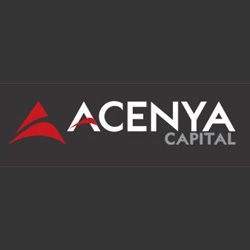You work hard in your younger days to secure the necessary finances to live comfortably in your older years. That is where a pension plan comes in handy. A pension is a tax-free long-term savings plan that provides the necessary finances to make you comfortable in your older years. While most people rely on a state pension scheme from the government, it may only cover their basic living expenses. In this guide, expert pensions will explain:

- Why use a pension?
- Types of pensions
- What are the rules of pension schemes?
- What is tax relief?
- How much do I need per year to retire comfortably?
- When is the current retirement age?
- How to make your current pension stretch?
1. Why use a pension?
A pension scheme is similar to a turbo-charged savings scheme where your money is invested for the long term. There are three basic advantages of a pension:
- Tax relief – The government doesn’t deduct any taxes from your pension. In fact, you basically get free cash with your pension. The rate of tax relief ranges between 20-45% depending on your income where basic-rate taxpayers get a £20 top-up for every £80 they contribute to the scheme. Higher rate taxpayers will get a £40 top-up for every £60 they contribute to the pension scheme. On the other hand, additional rate taxpayers will receive a £45 top-up for every £55 they contribute.
- Employer contributions – In a workplace pension scheme, your employer should put at least 3% of your “qualifying earnings” into the pension scheme while some employers contribute more. For example, if you decide to contribute 5% of your salary to the pension scheme, your employer will match it and pay 5%. It is quite similar to getting a pay rise that is delayed until your 55th birthday. Most employees join a pension scheme on an auto-enrolment basis when they get a new job. But you can always ask the employer for the specific ins and outs of the offer.
- Tax-free lump sum – The third advantage of a pension scheme is that you can take 25% of it as a tax-free lump sum when it is time to take money out of the pension. In fact, a quarter of your life savings is safe from the taxman. Most people use this lump sum to improve their homes or book the holiday of their lifetime. But if you decide to withdraw the pension in small chunks, 25% of each portion becomes tax-free. This is one of the best ways to make your pension stretch, as explained in the final chapter of this guide.
2. Types of pensions
There are three basic types of pensions including the state pension scheme, final salary schemes, and defined contribution products.
- The state pension scheme – When you reach the pension age in your particular state, the government will pay this. The current pension age is 66, and it will rise to 67 by 2028. The full new state pension is around £179.60/week at the moment. But the amount of money you receive will depend on your national insurance record, which is essentially the number of years you worked, received national insurance credits, or paid voluntary national insurance contributions.
How many years for a full state pension? You should at least 35 years on the national insurance record to become eligible for the full state pension. In fact, your retirement is similar to a meal with several courses where the state pension is the starter. You should not rely on the state pension because you will still be hungry even after receiving it. Even the full state pension is around £9,339/year. The state pension increases each year according to the triple lock guarantee. But the triple lock guarantee has been suspended for the tax years 2022 and 2023. Most pension schemes are similar to a three-course meal, and you should make sure that you have enough to keep you full in retirement age. - The old-fashioned final salary scheme – The final salary pension scheme is also known as a defined benefit pension and is a bit of a dinosaur. This scheme promises to pay the worker a fixed income when he or she retires, regardless of how the scheme was invested and how it performed. The retirement income in this scheme is based on the length of time you worked in the company. These schemes are quite rare these days and are expensive to operate. These schemes are very generous and you may think of them as all-you-can-eat buffets where lucky diners get the chance of tucking into a tremendous feast.
- Defined contribution pension – If you have invested in a defined contribution pension scheme, the value of your contribution will depend on:
* How much you invest in the scheme
* Your investment returns
This type of pension scheme has become the most common type of pension scheme overtaking the final salary pension scheme. It works like this:
* You put in some money out of your regular monthly income every month, your employer also makes payments. It will be topped up with tax relief. For a basic-rate taxpayer, it means for every £80 he or she contributes, the government will contribute £20.
* Most full-time workers will get a pension when they start a job. In fact, most workplace pension schemes are now defined contribution schemes. In case, you have been auto-enrolled into a pension scheme in your workplace, it will most probably be a defined contribution scheme.
Your workplace pension is similar to the main course together with the state pension. The two combined will definitely fill you up. Beyond your workplace pension scheme, there are many types of defined contribution pension schemes such as; - The stakeholder pension – This is another type of defined contribution pension where you decide how much you will pay and it will get topped up with tax relief. This is a personal scheme without any contribution from your employer. When you reach the age of 55, you can access the money in this scheme. The age will rise to 57 years in 2028.
There is a limited choice of options when investing your money in a pension scheme. It is like a dessert à la carte. - The DIY pension – This is a different type of defined contribution scheme. It gives you a huge choice of where you should invest the money – including bonds, investment funds, gold, and even property. This scheme is great for confident and knowledgeable investors. The product is known as a self-invested personal pension or SIPP. There can be a bigger investment risk in this type of pension scheme.

 Hot Features
Hot Features











